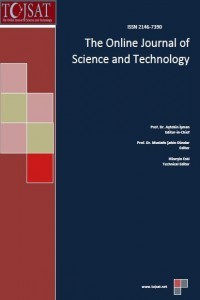Anti fungal effect of some plant oils against some oral clinical isolates of Candida albicans in Lebanese community
Anti fungal effect of some plant oils against some oral clinical isolates of Candida albicans in Lebanese community
___
- Agarwal, V.; Lal, P. and Pruthi, V. (2010). Effect of Plant Oils on Candida albicans. J Microbiol Immunol Infect., 43:447-451
- Amit, R. and Shailendra, S. (2006). Ethnomedicinal approach in biological and chemical investigation of phytochemicals as antimicrobials. Latest Rev., 4:103-111.
- Baser, K.H.C. (2002). Aromatic biodiversity among the flowering plant taxa of Turkey. Pure Appl Chem., 74: 527- 545.
- Brito EHS, Fontenelle ROS, Brilhante RSN et al. (2006) Phenotypic characterization and in vitro antifungal sensitivity of Candida spp. And M. pachydermatis strains from dogs. Vet J; doi: 10.1016/ j.trjl.2006.05.021.
- Chaieb K, Zamantar T, Ksouri R, et al.( 2007)Antioxidant properties of the essential oil of Eugenia caryophyllata and its antifungal activity against a large number of clinical Candida species. Mycoses.; 50: 403-6.
- Çitak S, Ozcelik B, Cesurm S, Abbasoglu U. (2005) In vitro susceptibility of Candida species isolated from blood culture to some antifungal agents. Jpn J Infect Dis.; 58: 44-6.
- Curillo-Munoz AJ, Quindos G, Ruesga M, et al.( 2006) In vitro anti fungal susceptibility testing of filamentous fungi with sensitive Yeast OneTm. Mycoses. 49: 293-7.
- Deak,T(1986). Identification of food borne yeast . food post.,50:243-264 Devkatte AN, Zore GB, Karuppayil SM. ( 2005) Potential of plant oil as inhibitors of Candida albicans growth. FEMS Yeast Research5: 867-73.
- Hammer, K.A.; Carson, C.F. and Riley, T.V. (2002). In vitro activity of Melaleuca alternifolia (tea tree) oil against dermatophytes other filamentous fungi. J Antimicrobial Chemother, 50: 195–9.
- Mahdavi Omran S, Esmailzadeh S, Rahmani Z (2009). Comparison of anticandida activity of thyme, pennyroyal and lemon essential oils versus antifungal drugs against Candida species. Jundishapur J Microbiol. 2: 53-60.
- Manohar, V.; Ingram, C.; Gray, J.; Talpur, N.A.; Echard, B.W.; Bagchi, D. and Preuss, H.G. (2001). Antifungal activities of origanum oil against Candida albicans. Mol. Cellular Biochem.. 228: 111-117.
- McDowell, E.M. and Trump, B.F. (1967). Histoligic fuxative suitable for diagnostic light and electron microscopy. Arch pathol lab., 10:405-413
- Motsei ML, Lindsey KL, van Staden J, Jager AK.( 2003) Screening of traditionally used South African plants for antifungal activity against Candida albicans. Ethnopharmacol. 86(2-3): 235-41
- National Committee for Clinical Laboratory Standards (1998). Reference Method for Broth Dilution Antifungal Susceptibility Testing of Conidium-Forming Filamentous Fungi: Proposed Standard M38-P. NCCLS, Wayne, PA, USA.
- Rusenuva, N. and Parvanov, P. (2009). Antimicrobial activities of twelve essential oils against microorganisms of veterinary importance. J.Trakia. Sci., 7:37-43
- ISSN: 2146-7390
- Başlangıç: 2011
- Yayıncı: The association of science, education and technology
An integrated approach to supplier selection using AHP and FUZZY PROMETHEE
Potency of Aqueous White Grubs Extract Against CCl4 Induced Liver Diseases in Rats
M. S. SULE, A. J. ALHASSAN, Y. ABDULMUMUNİ
Putting Customer in Charge of Design: Opportunities and Challenges
Zakia OLAMA, H. HOLAİL, S. MAKKİ
Sakarya University Academic Evaluation and Quality Development Applications
Determination of corrosion rate under various corrosive environments using image analysis.
Abdi AKİLA, Benhadj MABROUKA, Alioua SOUAD, Gacemi-kirane DJAMİLA
